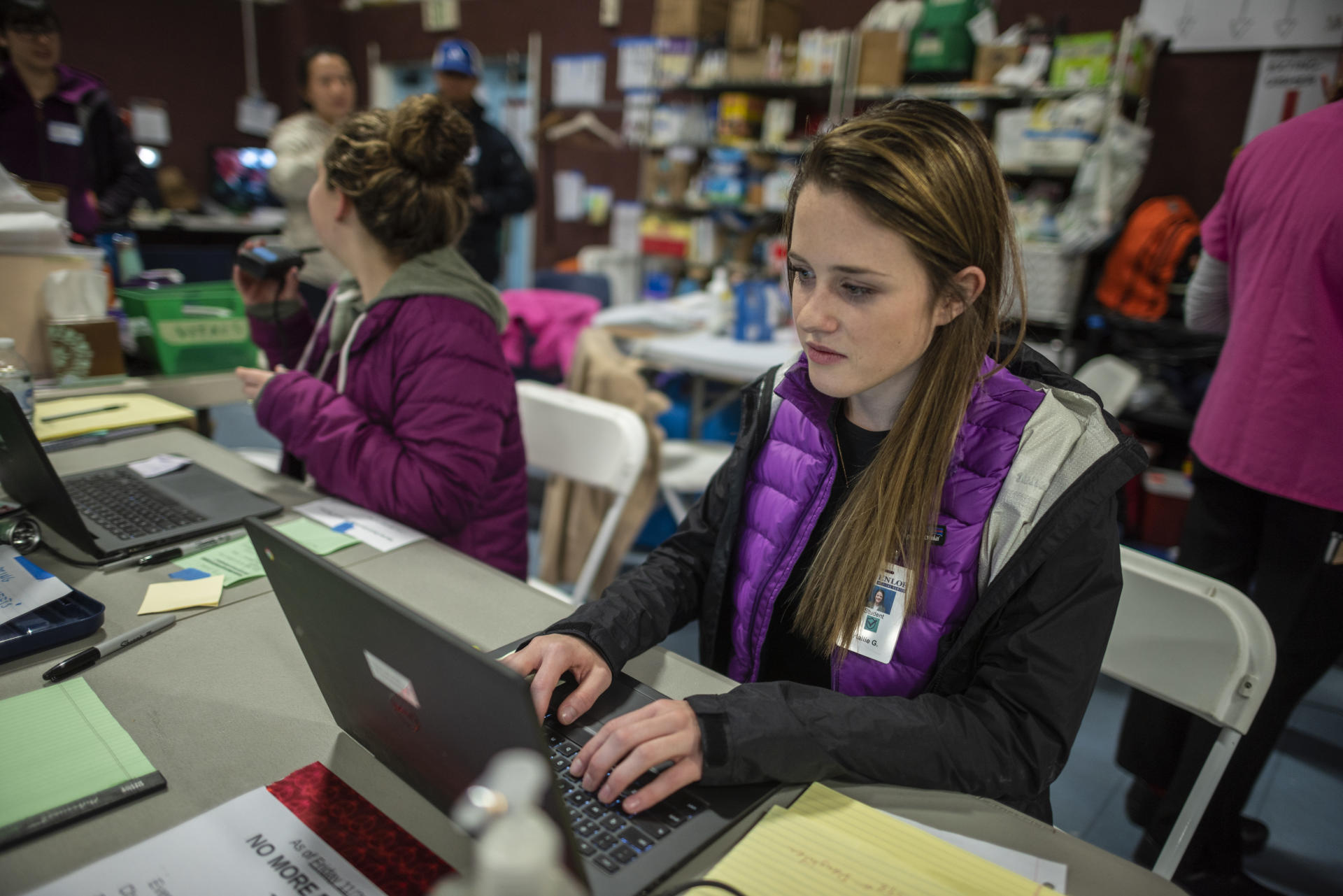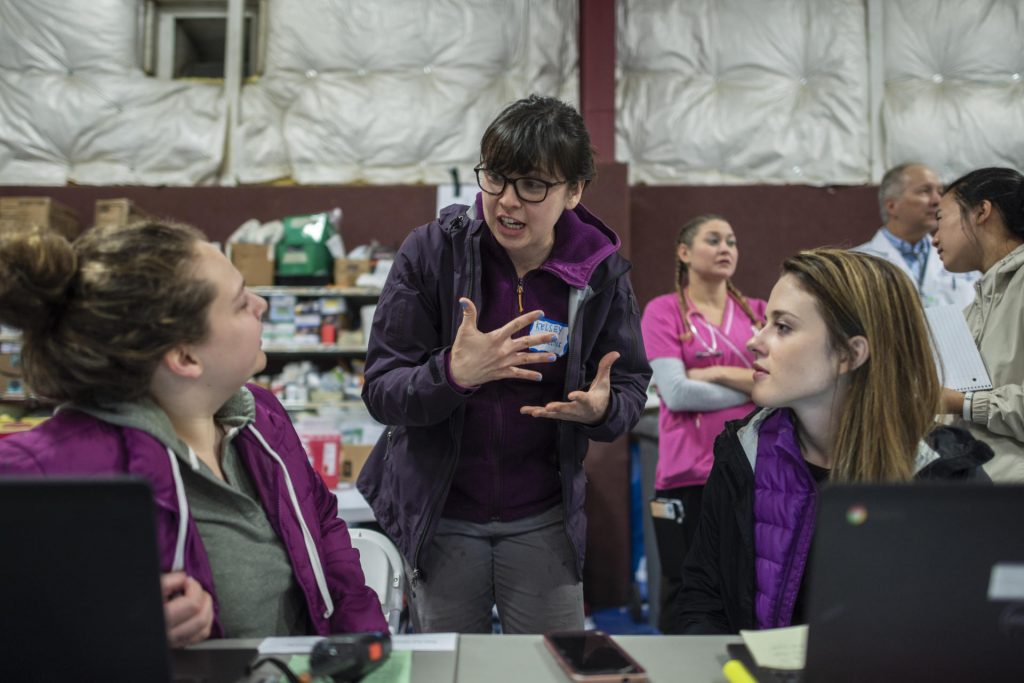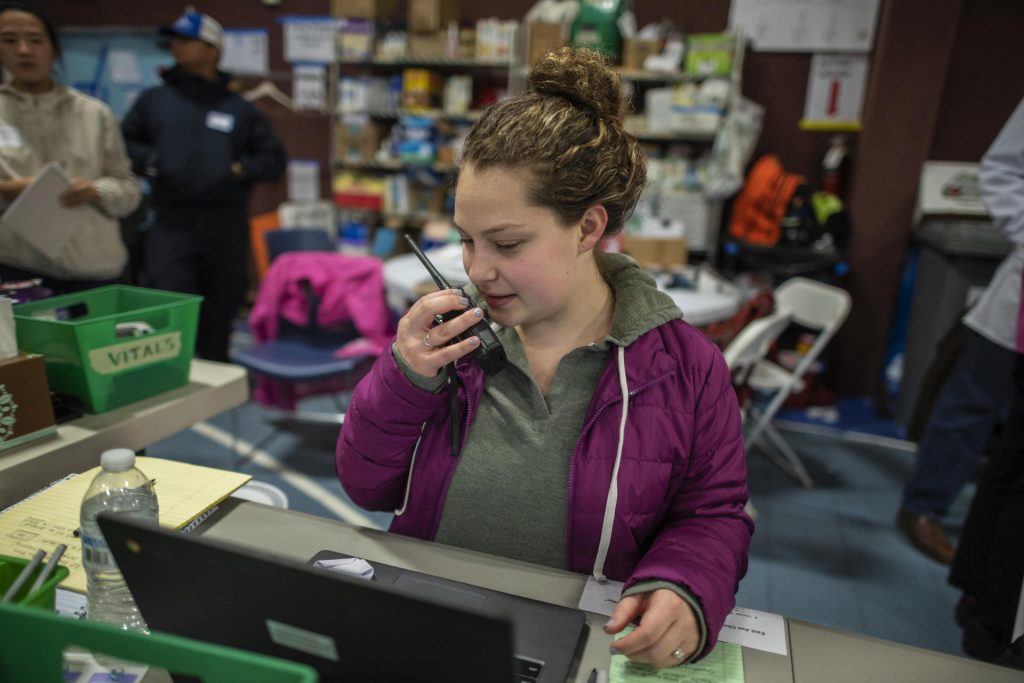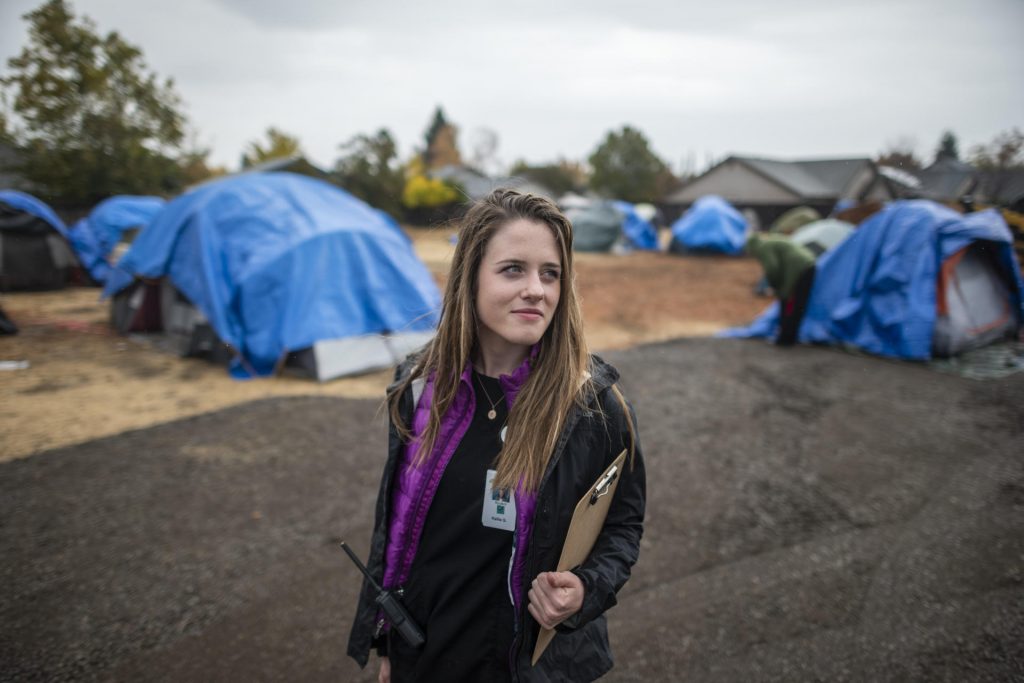Creating Comfort and Order out of Chaos

Hannah Weiglein (left) and Kallie Griffin (right) volunteer their efforts at the East Avenue Church as the Camp Fire continues to impact the area on Wednesday, November 21, 2018 in Chico, Calif. (Jason Halley/University Photographer/CSU Chico)
When Kallie Griffin and Bella Engbretson arrived at East Avenue Church on the morning of November 9, they were met with understandable chaos.
East Avenue Church was just one of dozens of shelters—official or otherwise—that had popped up across several counties to support the tens of thousands of people who were displaced by the Camp Fire, the deadliest and most devastating blaze in California history. Three nurses from Feather River Hospital and a paramedic were doing their best to triage 200 or so patients, but they clearly needed help.
“I knew how to do basic triage but I don’t have any skills,” Griffin said. “Then I realized no one was in charge. They were all writing on scratch pieces of paper. I was like, woah, this is not sustainable for people who are going to be here for an unpredictable amount of time.”

Griffin, a cellular and molecular biology major, and Engbretson, a psychology major, decided to do what they could to improve patient care. The shelter needed at least a rudimentary system of logging patients, supporting their medication needs, and tracking what was taking place.
So, the students created an electronic medical records system using Google Docs, establishing a log of each evacuee with first and last names, date of birth, allergies, medications, and conditions. They also created a prescription ordering system to get refills quickly at nearby pharmacies.
“The government aid didn’t come for days after. … If no one had stepped up, if the shelter had not opened, there may have been people who would have died,” Griffin said. “All these people had chronic illness like asthma, uncontrolled diabetes, high blood pressure. We needed to get them their medication as soon as possible.”
Other Chico State students soon joined them or created similar systems at other pop-up shelters. Quick to decline any outpourings of gratitude, Griffin and Engbretson humbly acknowledge they were part of the frontline of making sure evacuees were cared for in the days after the Camp Fire’s wrath began.
Engbretson, who works at the Student Health Center and as a teaching assistant for a campus lab, said she drew on the expertise and empathy she has witnessed in faculty and staff to take on a leadership role and serve her community in a time of need.
“I go to work every day and I see these people I work with helping other people,” Engbretson said. “There was no question if I was going to volunteer, it was just finding a place. It was instinctual.”

Seated at the shelter’s medical command center in the church gymnasium, the students typed away on laptops to update information as, just feet away, evacuees laid on mattresses and donated bedding in their temporary home. A wall of medical supplies behind them, the team gradually transitioned into other duties: overseeing signups for volunteer staffing, raising money through a GoFundMe, and working with state and other agencies to orchestrate tents and other imperative supplies.
“It just felt like a duty. You have to be able to offer your skills in a time like this,” Griffin said. “I couldn’t leave. I wanted to be there.”
Her parents, faculty members Michael and Amy Griffin, felt the same, as did her boyfriend, Andrew Cobourn (Exercise Physiology, ’17), who drove over from Nevada. While waiting to get into medical school, he works his winters with Tahoe Nordic Search and Rescue, and when not helping with searches for human remains in the Paradise area, he too joined the East Avenue Church efforts.

“Once I saw how many people were there, I could not step away from it,” he said. “They needed us.”
A lot of the team’s interactions in the initial days were checking people’s vitals while asking the simple questions of “How are you doing?” and “What can I do for you?” Many evacuees, they said, wanted simply to share their stories.
“Some of my patients said they barely made it out. They saw their houses starting to burn as they drove away. Some of them were wearing pajamas because that’s what they were wearing when they saw the flames,” Cobourn said. “I don’t think I have ever been in a situation before where people needed help so badly.”
Cobourn, who interned at the Shalom Free Clinic while studying at Chico State, said helping vulnerable populations, especially those who struggle to access health care under normal conditions, is what drives his career aspirations, and this experience only affirmed that.
“These people are the poorest patients, they are the elderly, they are often the sickest patients, they have chronic conditions that need medication or care around the clock,” he said. “These people need your help and no one else is going to give it to them, so you have to step up and be that person.”


